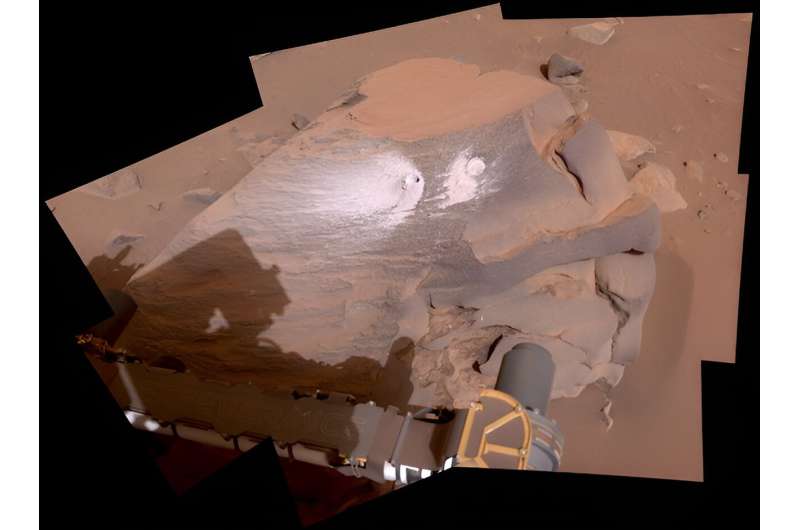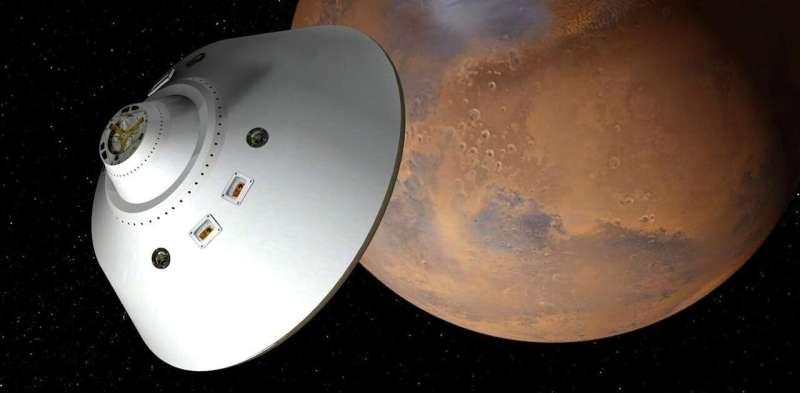Seeing deadlines get pushed into the future isn't new. It has happened with NASA's plans to return to the moon and Europe's ExoMars mission to find life on the red planet. While it is good to be realistic about timelines, the landscape of space exploration has changed over the last two decades, as organizations like NASA experience large scale financial strain and job losses.
State superpowers are no longer sending people to the moon with huge budgets as they did in the Apollo era. So innovation and efficiency are vital for making space exploration financially possible.
Private companies are taking up a larger market share of space in the west. This is a watershed moment for space exploration and a wake-up call to pursue innovation that reins in spending. The alternative is to risk abandoning the final frontier.
A dry run for astronauts
Mars sample return has the potential to be scientifically groundbreaking in several ways. Rocks collected from Jezero Crater, specifically an outcrop called Bunsen's Peak, has been found to be made up of minerals deposited in water.
On Earth, minerals deposited through water are good at trapping biological material, such as microorganisms. They can also give an indication of climate conditions at the time the rock formed.
There are limits to the science that can be carried out with scientific instruments that are also light enough to be loaded onto a rover. The ability to analyze samples of Martian rock in a lab on Earth could yield profound insights into the possibilities for life in space.
But there is an even more fundamental reason as to why Mars sample return is so important. It's a stepping stone to putting humans on Mars. NASA's program of human space exploration explicitly aims to put humans on Mars.

If you can't bring back a rock sample, how will you ever bring back an astronaut? The safe storage and return of goods by launching from another planet back to Earth, in an economically viable way, are all necessary for a human Mars mission.
Missions in space are dangerous, with astronauts unable to rely on mission control over 100 million miles away. Any attempt to put boots on Mars must be done in a phased manner in order to reduce risk.
A number of space agencies around the world are exploring the potential missions to deliver samples of material from Mars or its moons, including China and Japan. Part of the reason for this interest is as a proof-of-concept for human landings—albeit a scaled-down one.
Innovation and miniaturization
Despite the importance of the mission, NASA still needs to cut the Mars sample return budget from US$11 billion to US$8 billion in order to fulfill it. While a revised plan aims to streamline the mission architecture to make it less complex, as NASA's call for ideas suggests, innovation from academia will need to be brought in at a design level.
There are many examples where engineers are already coming up with innovations to space exploration hardware that could deliver such efficiencies. For example, smaller, lighter rovers that are still able to withstand the harsh environments on other planetary bodies could cut costs and deliver other benefits.
An unconventional chassis based on the way that sandfish move around on shorelines could help rovers overcome large obstacles with less wheels, slimming down its weight and size.
Weight could also be saved on rovers by exploring innovative drilling and sampling methods. Prototype solutions with internal mechanisms that support lighter drills and expanded sample storage should be a priority for designers. These might not help the current Mars sample return mission, which will use a rover already on Mars, but it could bring down the cost of future sampling missions.
NASA asking the scientific community to come up with new ways to carry out Mars sample return is a recognition that things cannot go on as they are. Space exploration needs to embrace innovation, and a first step for that is engaging with academia.
To consolidate and accelerate transitional research, transferring knowledge from original inventors in the lab to the field will be vital to the field's longevity and depends on closer, sustainable relationships with academics and research groups looking at space.
Private companies entering the space race—and new space powers like India, China, Saudi Arabia and the UAE—have shown that they are willing to look beyond the designs which have worked up until now, embracing innovation to improve cost efficiency.
Unless legacy organizations begin to seriously consider how innovation and knowledge transfer can make space exploration cheaper, they will have to ask themselves hard questions in future if they want to continue participating in cutting-edge space exploration.
Provided by The Conversation
This article is republished from The Conversation under a Creative Commons license. Read the original article.![]()



